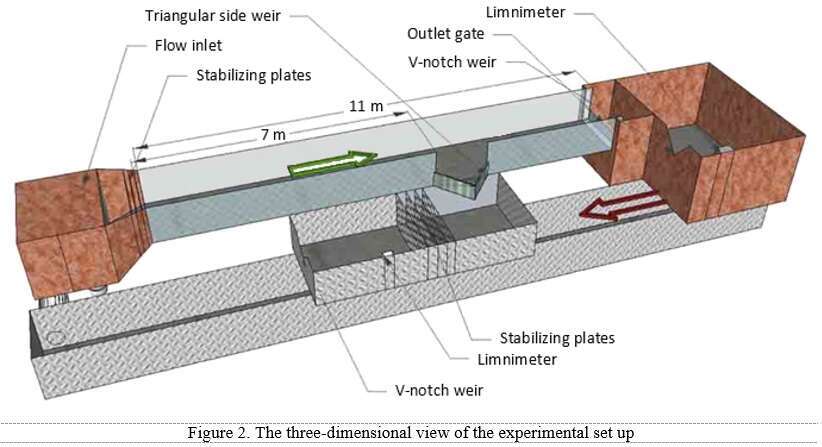
Discharge Coefficient of Triangular Labyrinth Side Weir (with Inclined Bed) Using the Nonlinear PLS Method
2Department of Water Resources Engineering, Ph.D. Candidate, Tehran University, Iran
3Department of Civil Engineering, Former Graduate Student, Sharif University of Technology, Iran
4Department of Civil Engineering, Undergraduate Student, Shiraz University, Iran
Side weirs are hydraulic control structures widely used in irrigation, drainage networks and wastewater treatment plants. These structures can be served for adjustment and diverting of flow with minimum energy loss. In spite of many studies were carried out on rectangular side weirs, the studies on oblique and labyrinth side weirs are scarce. Sadeghian [1] extensively studied the performance of triangular labyrinth side weirs with inclined bed (Figs. 1&2). He conducted over 160 experimental tests and introduced Eq. (1) for estimation of the De Marchi coefficient of discharge for triangular labyrinth side weirs with one cycle and inclined bed.


![]()
Partial least square (PLS) is a robust method to estimate and fit multivariable statistical data. In effect, PLS is used to determine a dependent variable in terms of independent variables for nonlinear problems. Ramamurthy et al. [2] used this method in hydraulic engineering for the first time. In this study, based on the experimental data from more than 160 laboratory tests and through using the multivariable nonlinear partial least square (PLS) method, Eq. (2) is presented for discharge coefficient of triangular labyrinth side weirs with one cycle and inclined bed. The obtained empirical equations relating with the relevant geometric and hydraulic dimensionless parameters in a rectangular open channel. Comparison between results of the new presented equations and the measured data shows that the new proposed empirical equation can predict the discharge of diverted flow over side weirs with good accuracy.

Fig. 2 shows the comparison of calculated discharge coefficients for triangular labyrinth side weirs using Eq. (2) versus the measured data. In Fig. 2 most of the data are within the range of with NRMSE of 0.2420 for triangular labyrinth side weirs with an inclined bed. Table 2 shows a better comparison between the accuracy of Eq. (2) with Eq. (1) in predicting the discharge coefficient for triangular labyrinth side weirs.


Powered by Eventact EMS